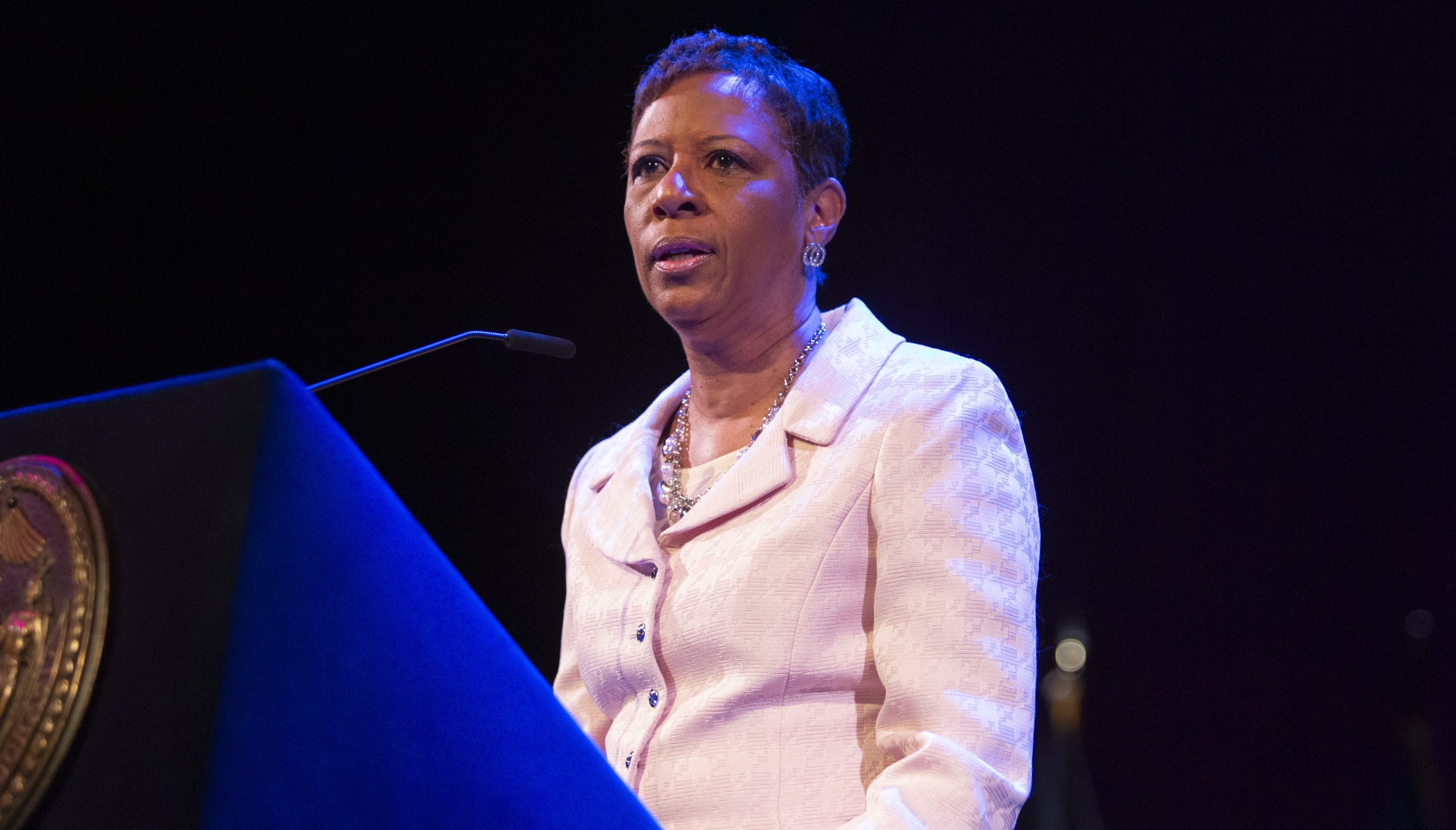The city must make its half-priced transit fare discount for low-income New Yorkers available to more commuters because the current threshold — 120 percent of the federal poverty level — excludes too many workers, Council Speaker Adrienne Adams said on Wednesday.
The leader of the 51-member lawmaking body said she wants Mayor Adams increase "Fair Fares" eligibility to those making 200 percent of the national guideline, which would require only a fraction more funding in the city’s $100-billion-plus annual budget.
“Better access to Fair Fares to ensure it reaches New Yorkers who need support ... requires deeper investments, which is why we will continue to push for eligibility at 200 percent of the federal poverty level, so that more people access our public transit system to unlock opportunity,” Speaker Adams said at her State of the City address.
The five-year-old city program was originally restricted to the federal poverty level, which is well below the minimum wage at $31,200 for a family of four. The Council tried to double the threshold last year, too, but after negotiations with the mayor, both sides of city government agreed to lifting the limit to 120 percent of the federal guidelines.
A 200-percent threshold would only increase the annual cost of the program to $150 million, up from the current $95 million allocation, according to the Community Service Society, which has long pushed for more access to Fair Fares.
“It should be unacceptable that someone working full-time at the minimum wage makes too much to qualify for the program,” said Jeff Maclin, a spokesman for the Community Service Society. “We think that is a reasonable investment of taxpayer dollars to spread the economic benefit of the program to more low-income working New Yorkers.”
Nearly 321,000 New Yorkers are currently enrolled in Fair Fares, according to the program website, about one-third of the people who meet the current requirements, experts at CSS estimate.
The state Assembly also got behind a 200-percent benchmark in its position papers for the state budget released on Tuesday, but that's just part of the negotiations with the state Senate and Gov. Hochul.
The Big Apple continues to have of the strictest income barriers for low-income transit discounts in the country, with several other systems — such as BART in California, King Country Metro in the Seattle area, and Oregon’s TriMet — using the 200-percent threshold, a 2021 study showed.
Transit advocates said the higher bar is long overdue.
“Two-hundred percent is a more realistic number for a family of four of working people; people who are holding jobs and going to school, people who need access to transit system and who are scraping by,” said Lisa Daglian, the executive director of the Permanent Citizens Advisory Committee to the MTA. “Riding transit and getting to work, isn’t a luxury, that’s a necessity.”
The mayor’s office declined to comment directly on raising the Fair Fares income threshold, but spokesman Charles Lutvak said the city would try to do more outreach to get people enrolled.






